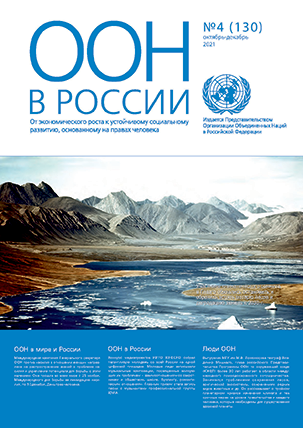A healthy lifestyle is the fashion in Russian cities
A number of cities in the Russian Federation have joined the national association of healthy towns, districts and communities, established as part of the international Healthy Cities project of the WHO Regional Office for Europe. The aim is to promote healthy lifestyles, create healthy living conditions, and prevent chronic diseases.
World Health Day in Stavropol
On World Health Day 2012, the Russian city of Stavropol held mass exercise classes in its main square. City officials and local parliamentarians joined in a race. Some 10 000 people dropped into 80 medical facilities set up to measure blood pressure and body mass index during the day.
These were just a few of the city-wide events sponsored by Stavropol’s Healthy Cities office, responsible for raising awareness of healthy lifestyles.
Stavropol, home to over 400 000 people and the administrative center of Stavropol Territory in the south of the Russian Federation, is one of almost 100 cities in the 30 countries of the WHO European Region that make up the international Healthy Cities movement.
Prevention of chronic disease through the Healthy Cities network
The term “healthy city” comes from an initiative begun in 1986, when WHO’s regional office for Europe founded the Healthy Cities movement. The concept has since become known throughout the region as a way of establishing healthy public policy at the local level through health promotion.
“Every year, more than 10 000 Stavropol residents take part in the ‘Stop High Blood Pressure!’ and ‘Lose those Extra Kilos!’ campaigns organized by the local authorities to mark World Health Day.”
Dr Karen Amlaev, WHO Healthy Cities campaign coordinator in Stavropol
The movement took off in Russia in 1996. Stavropol was an enthusiastic and early participant, establishing a Healthy Cities project office in 2006, under the auspices of the Municipal Centre for Preventive Medicine, and being accredited to the WHO European Healthy Cities network in 2009. Many other Russian cities are now following its example.
One major incentive has been to reduce the risk of noncommunicable diseases, which currently cause 82% of all deaths in Stavropol. Cardiovascular disease alone accounts for 62% (higher than the global average of 48%) and cancer causes almost 15% of deaths.
Stavropol on course to create healthy living conditions
Over the past six years, Stavropol has staged a variety of campaigns to promote healthy lifestyles, reduce the prevalence of factors that increase the risk of noncommunicable diseases and create healthy living conditions in the city.
These actions include an anti-smoking campaign, a “Stop High Blood Pressure” campaign, the opening of body mass index (BMI) measurement points as part of a “Lose those Extra Kilos!” campaign; a Festival of Health, with prizes awarded for the healthiest class, the healthiest workforce, the healthiest family, the best programme or publication about health, and the healthiest meal; and annual sports events to mark World Health Day.
Are citizens of Stavropol any healthier?
“The Healthy Cities project is currently one of the most effective tools for putting in place coordinated actions in cities to improve health and quality of life,” says Dr Karen Amlaev, WHO Healthy Cities campaign coordinator in Stavropol.
More than 100 000 citizens make use of Stavropol’s “green lungs” – the city boasts 112.5 square metres of green space per inhabitant, far more than the national average – by routinely doing physical exercise and playing sports. The city has built 112 sports and recreation grounds in residential courtyard areas to encourage even greater physical activity.
Over the past five years, more than 10 000 adults and children have attended specially designated health centres for preventive check-ups and hundreds of people attend classes to educate themselves about healthy lifestyles and high blood pressure.
Immunization coverage for children reached 99.9%, and more than 98% of children were reached by summertime health and recreation campaigns.
The result: in just five years, the health of Stavropol’s people has measurably improved and mortality rates have dropped. From 2007 to 2012, average life expectancy increased by more than 12 months to over 71 years. Clear proof that healthy cities can contribute to healthy lives.

